| |
|
|
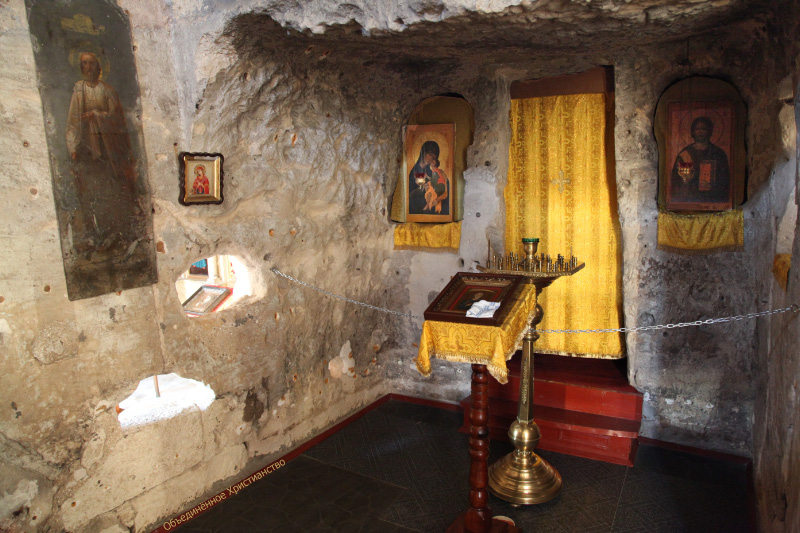 |
| |
|
|
|
Інкерманський Свято-Климентіївський печерний чоловічий монастир, Інкерман, Кримський Півострів
Инкерманский Свято-Климентовский пещерный мужской монастырь, Инкерман, Крымского Полуострова
Inkerman Cave Monastery of Saint Clement, Inkerman, Crimean Peninsula
Greek, Roman, Kievan Rusan, Imperial Russian, Orthodox and Catholic, and hewn and build,
in part with his own hands, by Saint Clement, martyred in Anno Domini 99 or 101 in
Chersonesus - Χερσόνησος (contracted in Medieval Greek as Χερσών - Корсунь - Korsun).
Consecrated by Apostle Saint Peter, the Liber Pontificalis lists Saint Clement as the fourth
pope (r. 92 to 99), the third successor after Peter, after Saints Linus and Anacletus/Cletus.
Saint Cyril – together with his brother Methodius - Κύριλλος καὶ Μεθόδιος / Кѷриллъ и Меѳодїи
- Catholic Patron Saints of Europe and Orthodox Equals to the Apostles - равноапостольные –
brought the relics of Saint Clement to Rome, where they are now with those of Saint Cyril himself
in the Basilica of San Clemente - Basilica di San Clemente.
Except for the Church of the Holy Sepulchre in Jerusalem and the Church of the Nativity in Bethlehem,
it is difficult to imagine a place of more symbolic historical significance for the unity of the
Orthodox-Catholic Church which once was and can and should be again, and which is therefore also
a prized target for those forces of evil who would sow dissension in the Church and in Christendom. |
| |
|
|
| |
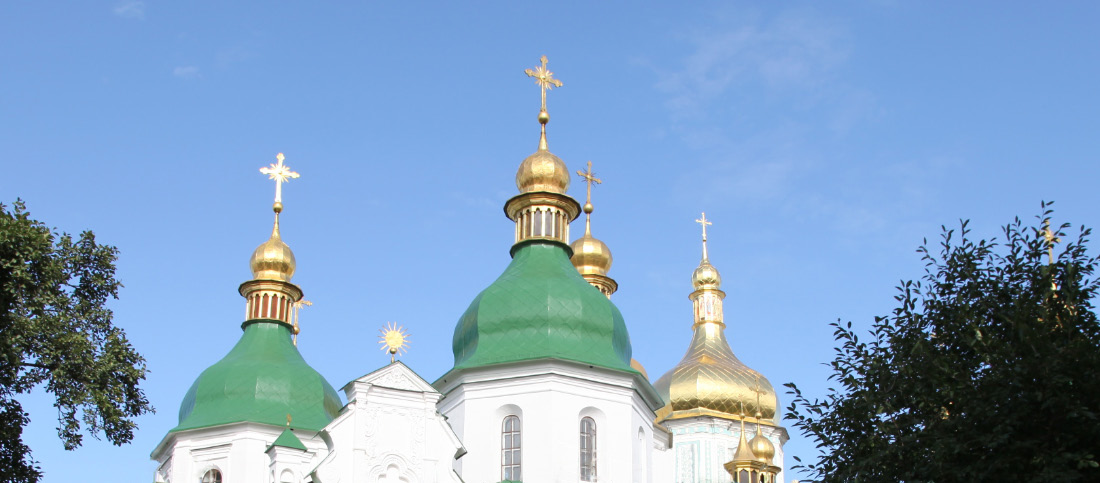 |
|
| |
Constructed during the reign of his son, Ярослав Володимирович Мудрий – Yaroslav the Wise – Ярослав Владимирович Мудрый (* c. 978-982 to 17/20 February 1054 †),
there is a view that the foundation of the Собор Святої Софії – Cathedral of Saint Sophia – Собор Святой Софии may have been laid in 1011, toward the end of the reign
of Saint Vladimir (or Volodymir) the Great (r. 11 June 980 – 15 July 1015), giving the life of this Holy Church an even more striking parallel to the life of Christianity
within of Kyivan Rus'. Yaroslav the Wise, himself interred in the Cathedral, who may have been Vladimir's son by Anna Porphyrogenita, daughter of Byzantine
Emperor Romanos II, rather than by Rogneda of Polotsk, did not inherit the throne as Grand Duke of Kyiv – Великий Князь Київський directly from his father,
Saint Volodymir (or Vladimir). Just as fratricidal conflict had brought Vladimir to the throne of Kyiv in 980 with the death of his brother Yaropolk, so too on
Vladimir's death fratricidal chaos ensued among Vladimir's sons — brothers and half-brothers from the many "marital" unions of Vladimir during the days before his
Christian conversion, and afterward — but with this crucial difference: in 1015 Kyivan Rus' was Christian and had been since Byzantine-rite, Orthodox-Catholic Christianity
was officially received as the state religion of Kyivan Rus', and with mass baptisms in the Dnieper River directed by Volodymir-Vladimir, on 14 August 988.
And the reader will note that the term Orthodox-Catholic may be used here in more than an aspirational sense. French-born, Roman Cardinal Humbert of Silva Candida and
Patriarch Michael Cerularius of Constantinople had not yet excommunicated each other in 988 or indeed by the conclusion of Yaroslav the Wise's reign on 20 February 1054.
Humbert's Bull of excommunication, placed on the the high altar of Hagia Sophia in Constantinople, occurred on 16 July 1054. (Humbert's impudent Bull was also illegal even
under his own Roman canon law, as Pope Leo IX had died on 19 April 1054, so Cardinal Humbert's warrant as legate lapsed immediately on that date.) Kyivan Rus' and its
successor states of the Ukraine, Russia and Belarus became Christian and passed through these early tumultuous but crucial rites of passage with a
United Orthodox-Catholic Church.
Returning though to Vladimir and the succession of his son Yaroslav (later known as the Wise) on Vladimir's death, the sovereignty of Kyivan' Rus passed first to Vladimir's
son, Sviatopolk I Vladimirovich. This is if Sviatopolk was in fact Vladimir's son by a former Greek nun, captured by Sviatoslav, the father of both Vladimir and Yaropolk.
Sviatopolk may instead have been sired by Yaropolk before Equal of the Apostles, Saint Vladimir the Great killed his brother Yaropolk and then raped his brother's widow,
the former Greek nun. Well, those were different times, and all this was before Vladimir's conversion. Recall Apostle Saint Paul's pre-conversion life.
In any case, this Sviatopolk (whether Vladimirovich or Yaropolkovich, and known to history as Sviatopolk the Accursed or the Accursed Prince) succeeded
Grand Duke Saint Volodymir-Vladimir after 15 July 1015. Between 15 July 1015 and Yaroslav the Wise's accession in 1019 there was a new round of internecine wars, involving
now also the Polish on Sviatopolk's side and the Varangians (Nordic Vikings) or Yaroslav's side. Three of the victims of the fratricide were younger but favored sons of Vladimir
(and so brothers of Yaroslav and of Sviatopolk, if indeed Sviatopolk was Vladimir's son and not Yaropolk's son). These were Boris, Gleb and Stanislav, perhaps all Vladimir's sons
by his Bulgarian wife Adela. The three were murdered in 1015. Though there is some departure from the hagiography in other sources (Norse sagas), in the Church in Kyivan Rus',
Boris and Gleb – Борис і Гліб – Борис и Глеб are the first canonized saints. Saint Boris takes the Christian name of Roman – Роман and Saint Gleb takes the
Christian name of Давид – David.
|
|
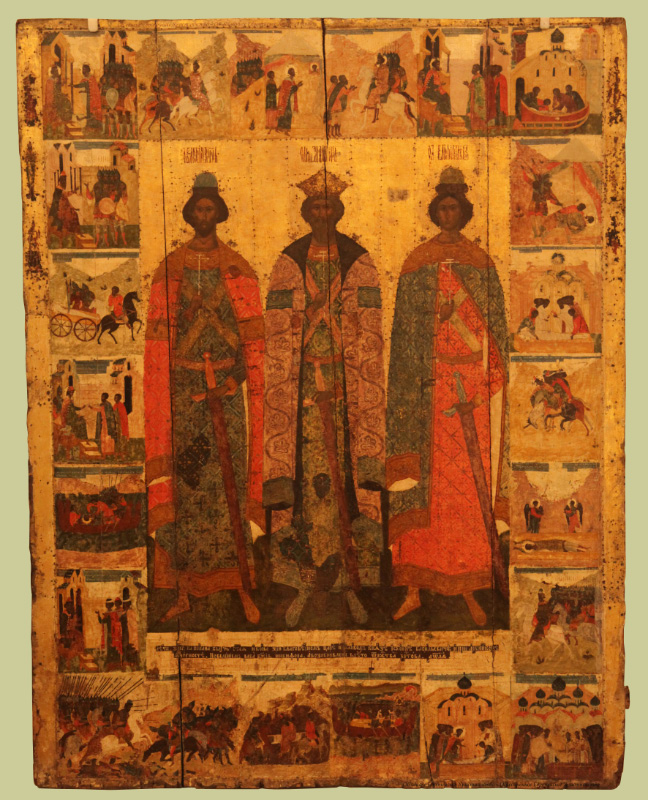
|
|
|
|
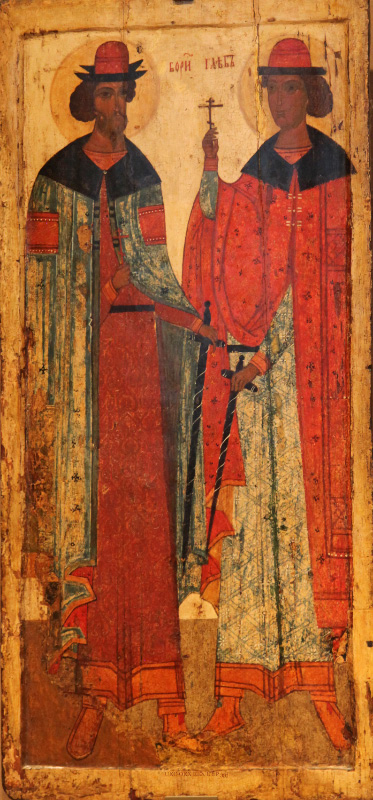
|
Псковского государственного объединенного историко-архитектурного и
художественного музея-заповедника –
Pskov State United Historical and Architectural Museum-Reserve |
|
|
|
Saints Boris (Roman) and Gleb (David), late XVth C., Rostov |
|
Хрещення Русі – Baptism of Rus' – Крещение Руси |
|
| |
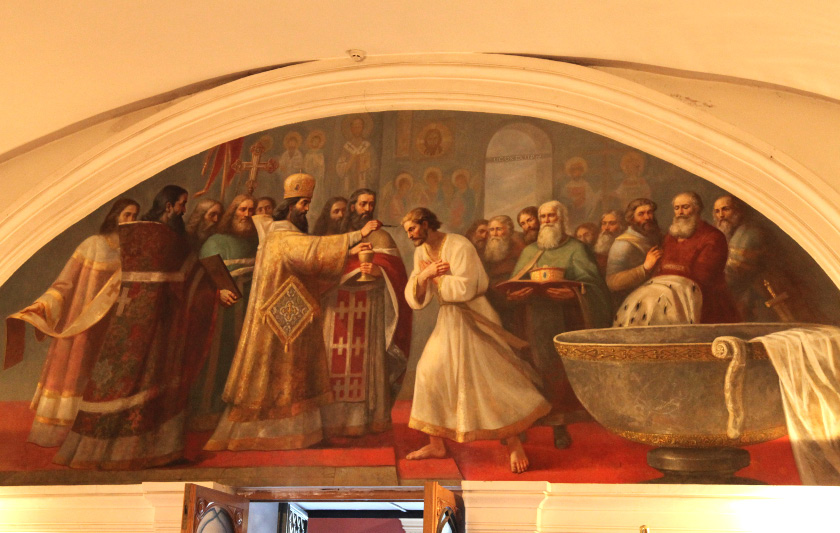 |
|
| |
Fresco in Владимирский Кафедральный Собор Cathedral of Saint Volodymyr in Χερσών - Корсунь - Corson |
|
| |
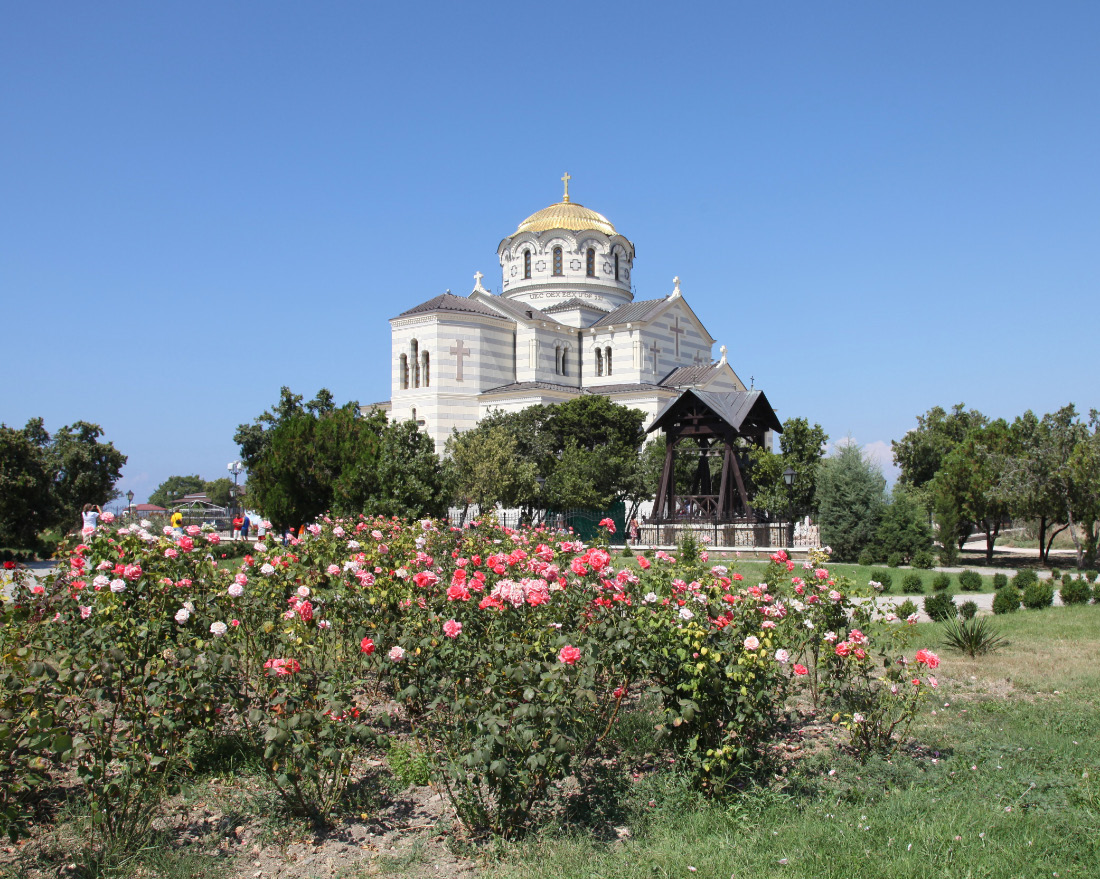 |
|
| |
Володимирський Собор в Корсуні – Cathedral of Saint Volodymir at dusk in Korsun on 3 August 2011
|
|
| |
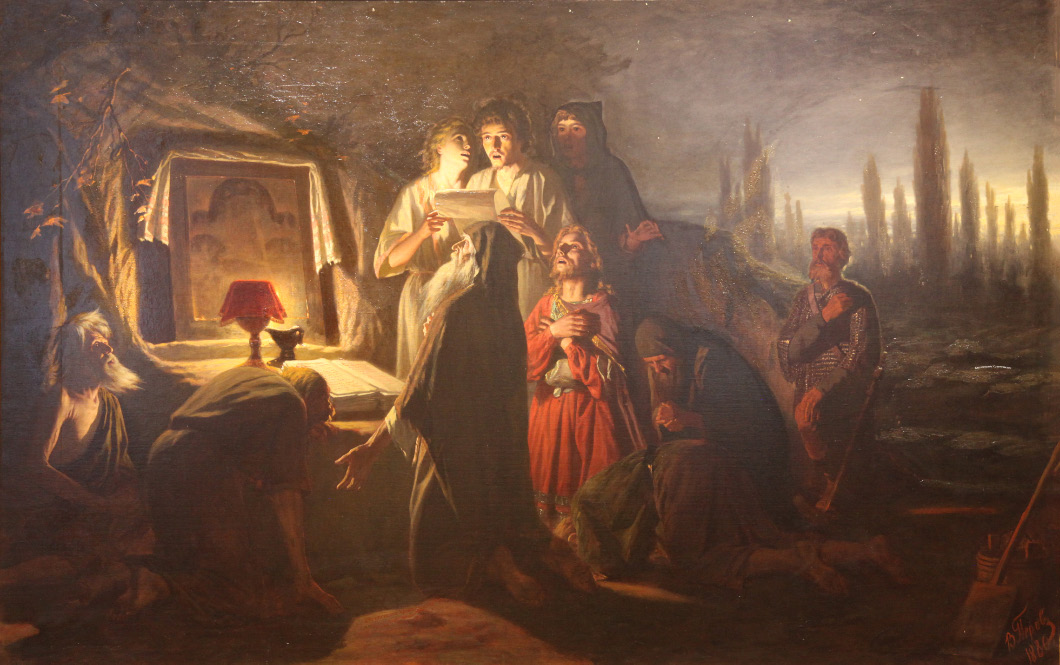 |
|
| |
Первые Христиане в Киеве – First Christians of Kiev (1880), by V.G. Perov – В.Г. Перов (1833/34–1882) in the Russian Museum in Saint Petersburg. |
|
| |
Russia and the Russian Orthodox Church do stand in a special position as regards the dialogues among the Oriental Orthodox, the Orthodox and the Catholics and as regards the process of Christian and ecclesiological re-unification, and this not only because in Realpolitik they are actually and potentially a whole lot more numerous than the Greeks. So too within European Christendom, the Russians are special, and they have a special and in important senses leadership role to play.
To many Descendants of European Christendom other than Russians the forgoing may seems strange. Indeed to play a holy role the Russians will need to rethink and change much within themselves, not least the mass fashion in recent decades of trying to view the atheist Communist period as somehow a continuation of and in continuity with — rather than an abominable interruption from — Russia's holy role within European Christendom and Christendom universal. Embracing evil in order to manufacture martyrs is not worthy of the least among Christian societies. Lapsed- or atheist- Jews may have started ... well, clearly did start and lead Bolshevism. Equally clear is that they could not have and did not do it alone. As difficult as it may be to acknowledge this about one's grandfathers and fathers, how can there be reconciliation, much less leadership, without truth? |
|
...Forgiveness - Прощение. |
...Святая Русь - Holy Rus. |
|
| |
|
|
|
|
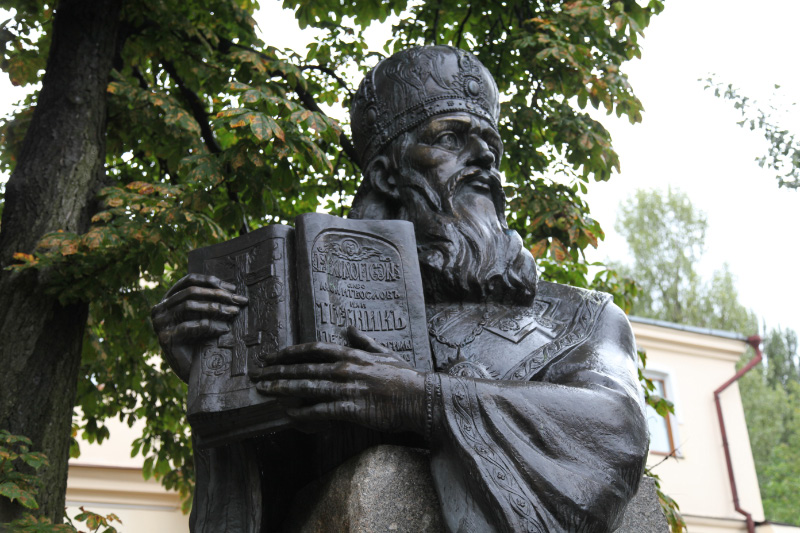 |
|
|
Петро Могила, Митрополит Київський, Галицький і всієї Русі – Petro Mohyla – Petru Movilă – Петр Могила – Piotr Mohyła
Metropolitan of Kiev, Halych and All-Rus' (и всея Руси) from 1633 until his death; canonized in 1996.
* 31 December 1597 O.S. (10 January 1597 N.S.) in Suceava, Principality of Moldavia, now in Romania -
1 January 1647 O.S (11 January 1647 N.S.) in Київ – Kyiv – Kiev – Киев – Kijów – Кіеў – Kijevas †,
then part of Poland when Poland was, as Poland had been since the Treaty of Lublin of 1 July 1569,
part of the unified state of the Polish–Lithuanian Commonwealth. (Old Style and New Style dates being of particular
significance in this period, as the so-called Gregorian Calendar was introduced by the fiat of Pope Gregory XIII in 1582.)
Monument is in the grounds of the Kiev Monastery of the Caves – Києво-Печерська Лавра – Киево-Печерская Лавра |
|
|
| |
|
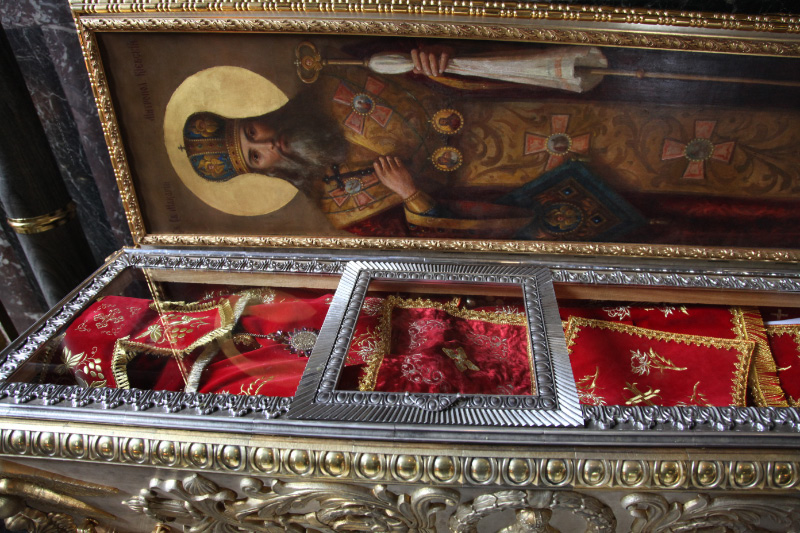 |
| |
|
|
Holy Hieromartyr Saint Macarius was Metropolitan of Kyiv in 1497. While serving the Divine Liturgy the Tatars attacked his Church. He refused to leave the Altar, and was martyred in front of it, murdered by the Muslims. His feast day is 1/14 May.
Begging for his prayers for the success of United European Christendom if and only if such be God's will. |
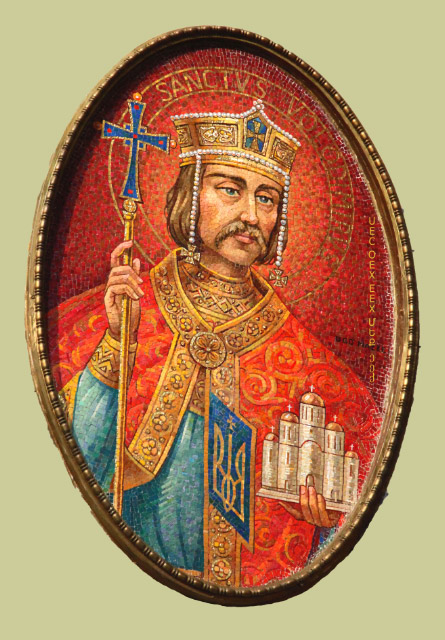 |
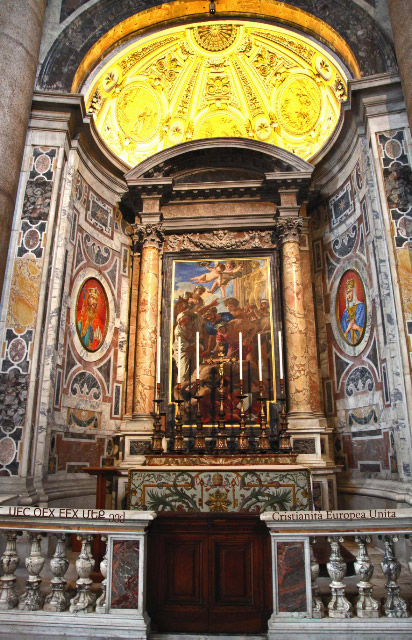
Altar in right-north transept of Basilica di San Pietro in Vaticano |
|
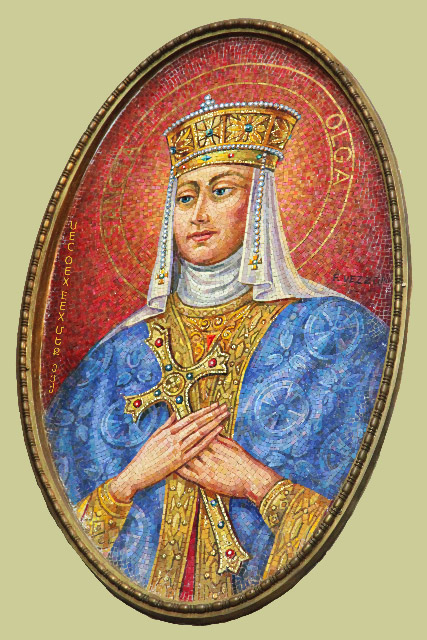 |
| |
Володимѣръ Свѧтославичь — Valdamarr Sveinaldsson |
|
|
|
|
|
|
Ольга — Helga |
Святого Рівноапостольного Великого Київського Князя Володимира Святославича, Просвітителя Русі в 988
Святого Равноапостольного Великого Киевского Князя Владимира Святославича, Просветителя Руси в 988
Святога Роўнаапостальнага Вялікага Кіеўскага Князя Уладзіміра Святаславіча, Асветніка Русі ў 988
Grand Prince of Kiev, Saint Vladimir Sviatoslavich, Equal of the Apostles, Illuminator of Rus in 988
(958/60 - 1015; r. 11 June 980 – 15 July 1015) |
|
Святої Рівноапостольної Київської Княгині Ольги
Святой Равноапостольной Киевской Княгини Ольги
Святой Роўнаапостальнай Кіеўскай Княгіні Вольгі
Regent Saint Olga, Equal of the Apostles, (890 — 11 July 969; r 945 — 963 as regent of Kievan Rus for her son, Saint Vladimir's father, Grand Prince of Kiev Svyatoslav), baptized in 957 in Constantinople. |
| |
|
|
|
Україна- Об’єднане Європейське Християнство |
| |
|
|
|
Ukraine - United European Christendom |
|